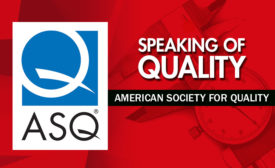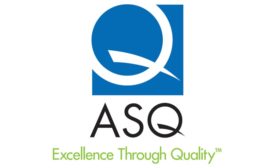Articles by Jim Spichiger
Speaking of Quality | Jim Spichiger
The use of quality standards is voluntary, but suppliers may be expected to comply with a specific standard as a condition of doing business.
Read More
Speaking of Quality | Jim Spichiger
ASQ Member Leaders are NICER
Why do these member leaders dedicate their precious personal time to serve?
January 15, 2022
Column | Jim Spichiger
Speaking of Quality: Code of Ethics
My moral compass has guided me well.
October 8, 2021
Speaking of Quality | Jim Spichiger
Collaborating with Industry
As 2021 Unfolds, ASQ Will Continue to Provide Ample and Meaningful Opportunities to Collaborate
July 8, 2021
Certification Integrity
Professional certifications demonstrate expertise.
September 28, 2020
Developing Skills while Giving Back
ASQ's core strength is its local presence.
June 30, 2020
The Value of Membership
Maximize the value you receive for your membership dollars.
January 8, 2020
Stay in the know with Quality’s comprehensive coverage of
the manufacturing and metrology industries.
eNewsletter | Website | eMagazine
JOIN TODAY!Copyright ©2024. All Rights Reserved BNP Media.
Design, CMS, Hosting & Web Development :: ePublishing



